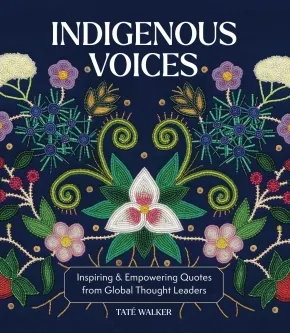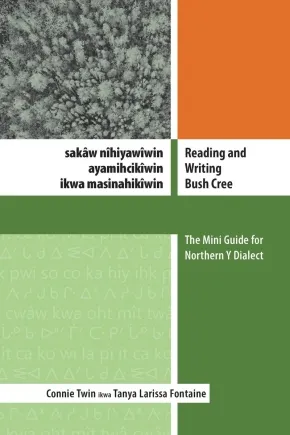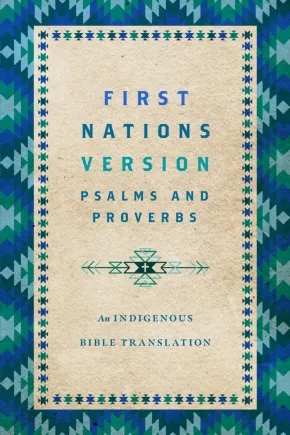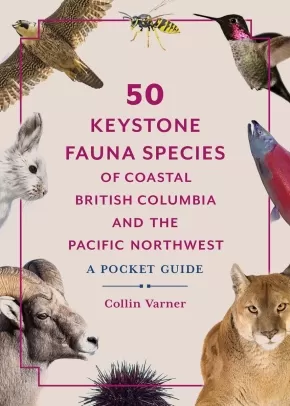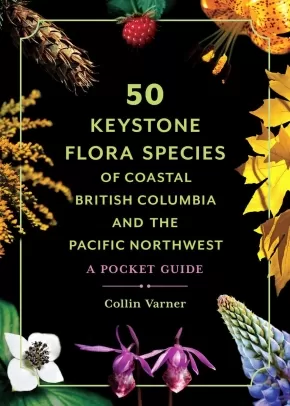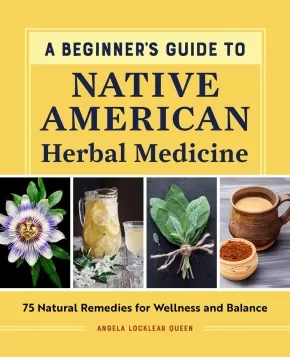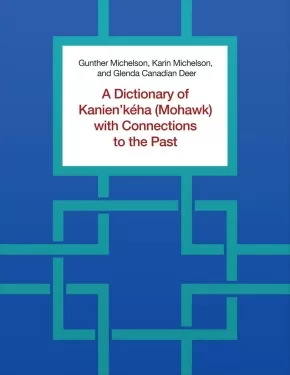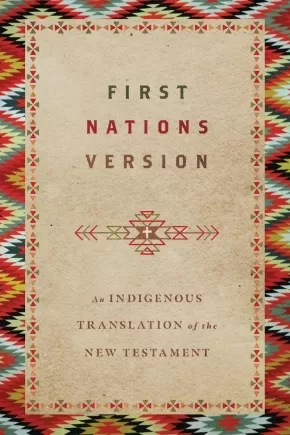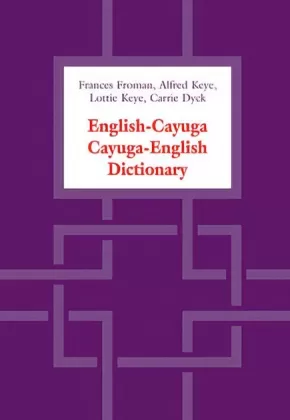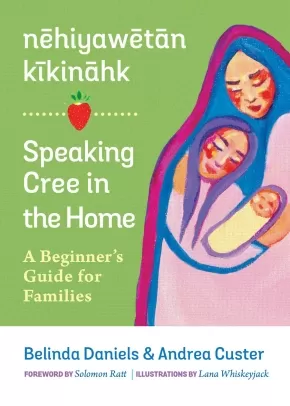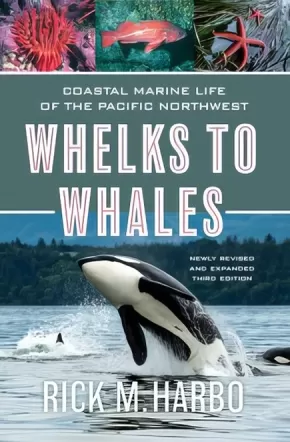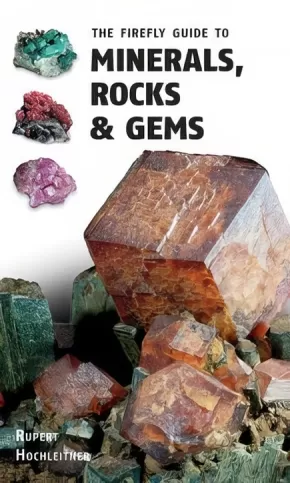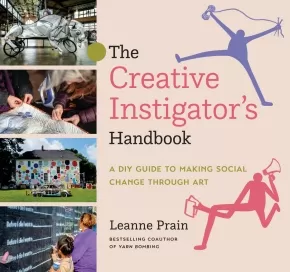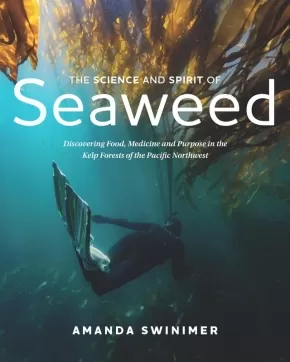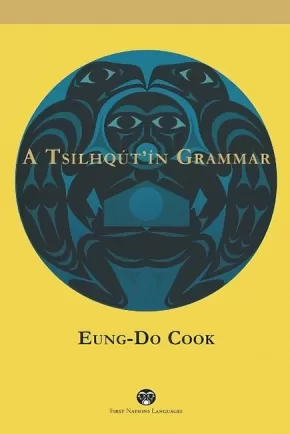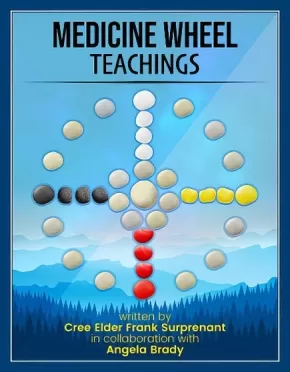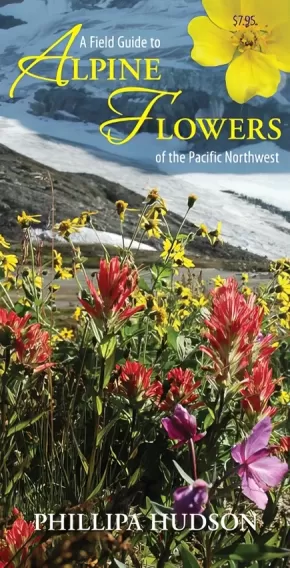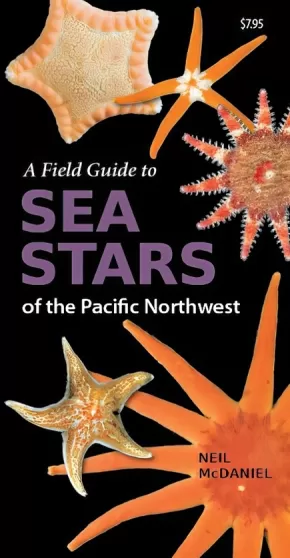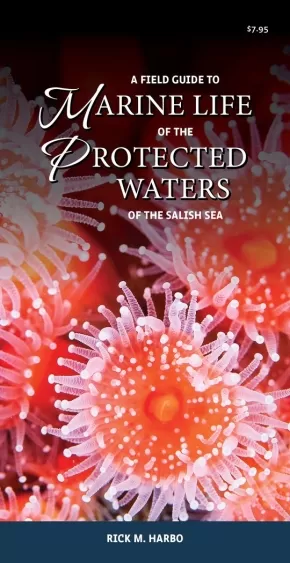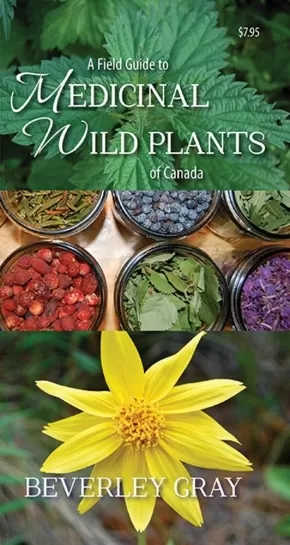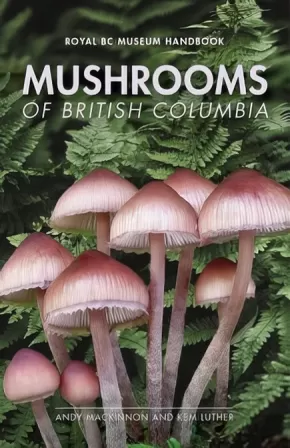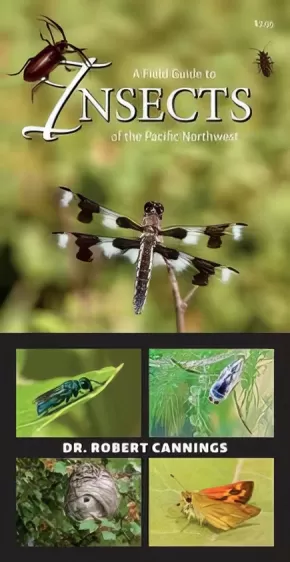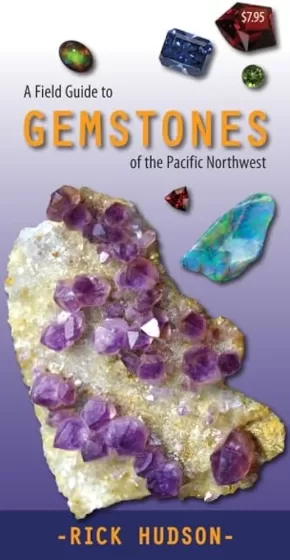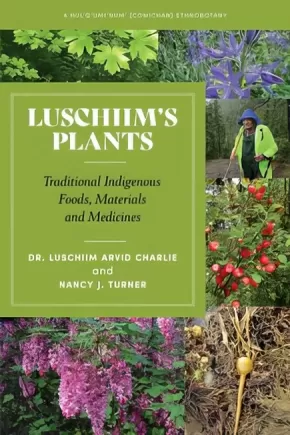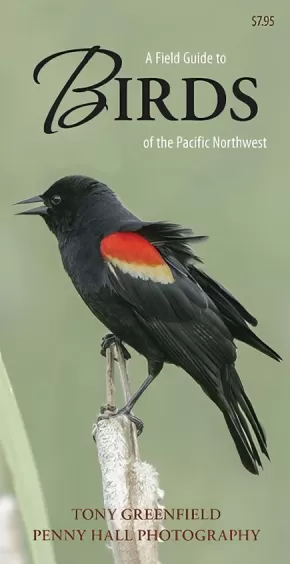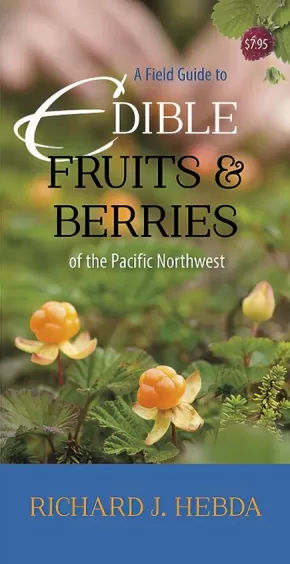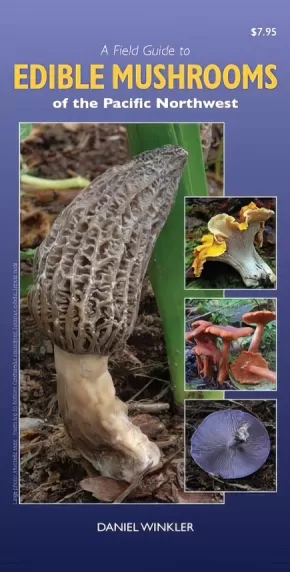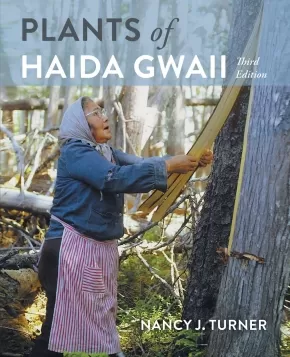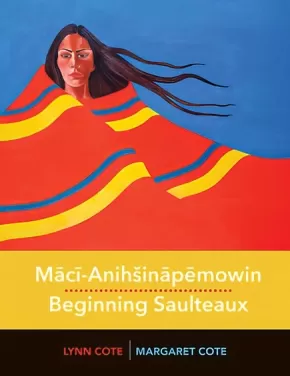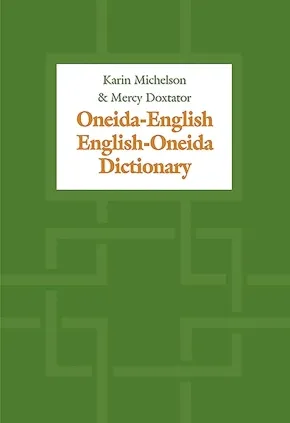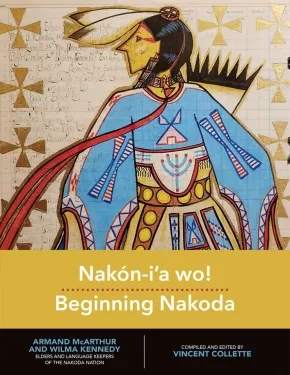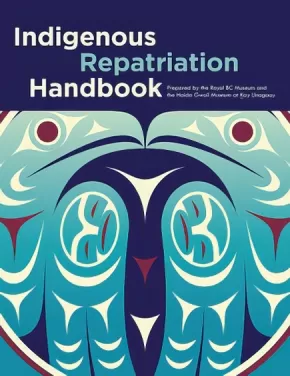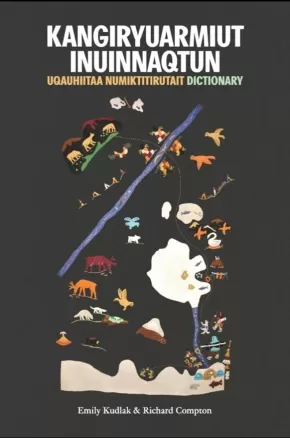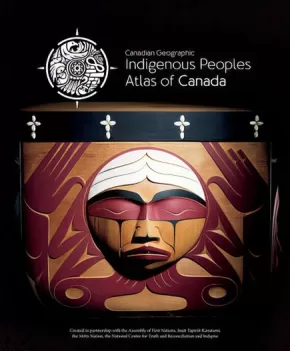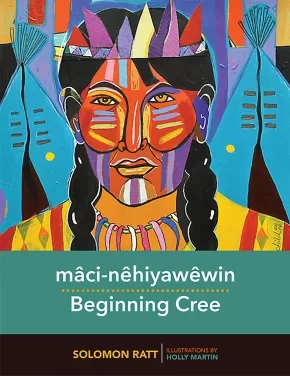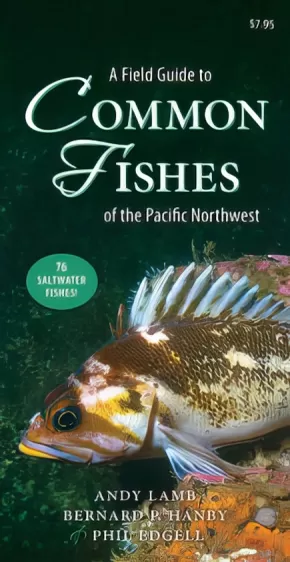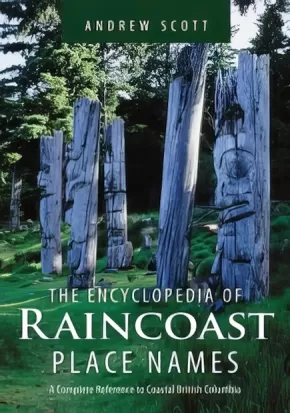
Reference
1
-
15
of
42 Results;
Sort By
Go To
of 3
Indigenous Voices: Inspiring & Empowering Quotes from Global Thought Leaders
$25.99
Format:
Hardcover
Text Content Territories:
Indigenous Canadian; Indigenous American; Indigenous South American;
Reading Level: N/A
ISBN / Barcode: 9781577154914
Synopsis:
Synopsis:
Immerse yourself in Indigenous Voices, an inspiring volume of quotations by Indigenous thought leaders, activists, politicians, and scholars illustrated with stunning artwork by Indigenous artists.
This captivating book weaves together the timeless wisdom of Indigenous people from various nations and regions through a mosaic of more than 60 quotes, words, and stories by elders, leaders, activists, scholars, and influential contemporaries spanning all walks of life. Discover the diverse and unique heritage of extraordinary people like:
- Shina Novalinga – A member of the Inuk living in Montreal, Canada, Shina Novalinga is a content creator, singer, and activist who shares her Inuk culture across social media, of which an important aspect is traditional throat singing with her mother.
- Natali Segovia – A member of the Quechua, Natali Segovia is the Executive Director of the Water Protector Legal Collective and a human rights attorney. Her advocacy focuses on defending Water Protectors and human rights defenders facing repression for their activism.
- Corrina Gould – Of the Ohlone, Corrina Gould is the chair and spokesperson for the Confederated Villages of Lisjan, the Co-Director for the Sogorea Te' Land Trust, and the lead organizer for Indian People Organizing for Change.
- Elias Not Afraid – A member of the Apsáalooke (Crow), Elias Not Afraid is a mega-award-winning queer beader and fashion designer. He says, “When people think of native beadwork, they think trinkets and good luck charms and dream catchers but it’s far from it. I create wearable art that is durable and can be used daily and last over a lifetime and be used as a family heirloom.”
- Lily Gladstone – An American actress from the Blackfeet Reservation, Gladstone is of Piegan Blackfeet, Nez Perce, and European heritage. They earned critical acclaim for portraying Mollie Kyle, an Osage woman who survived the Osage Indian murders in Martin Scorsese’s film Killers of the Flower Moon, among other important roles in film and television.
- Kola Shippentower – A member of the Umatilla, Shippentower is the first Native American player for the Oregon Ravens, a tackle football team for women and non-binary players.
- Shiloh Maples – Of the Odawa, Maples is a citizen of the Little River Band of Indians based in Michigan. Through her interest in Indigenous food systems and her own Ojibwe and Odawa heritage, she developed the program Sacred Roots for the American Indian Health and Family Services in Detroit, where she taught cooking classes and promoted dishes using traditional, seasonal, and local ingredients in a way that improved participants’ health while connecting them with their culture.
- Alvera Sargent – Sargent, of the Akwesasne Mohawk, worked with the Akwesasne Freedom School, one of the oldest Indigenous language schools in North America. “My hope for our tribal community at large is that more of our people come back to our traditional space. I am grateful that our time has come as Indigenous people are being recognized for their traditional knowledge systems. The community is recognizing that Indigenous people do have the wisdom of our ancestors to share, which helps all areas of our society.”
- And more!
Indigenous Voices offers a unique opportunity to connect with ancient traditions, refresh your perspective with modern insight, and gain awareness and understanding that resonate across cultures and generations.
Additional Information
192 pages | 7.5" x 8.6" | Hardcover
Reading and Writing Bush Cree: The Mini Guide for Northern Y Dialect
$34.95
Format:
Paperback
Text Content Territories:
Indigenous Canadian; First Nations; Cree (Nehiyawak); Woodland Cree;
Reading Level: N/A
ISBN / Barcode: 9781550599855
Synopsis:
Synopsis:
A Vital Resource to Preserve, Teach, and Live the Bush Cree Language
Reading and Writing Bush Cree is a heartfelt, practical, and approachable guide for fluent speakers and Cree language educators who want to learn to read and write sakâw nîhiyawîwin—Bush Cree, or the Northern Y dialect. Written by Connie Twin, a first-language speaker from Bigstone Cree Nation in northern Alberta, and Tanya Fontaine, a dedicated Cree language learner and educator, this book bridges oral fluency with written literacy to support language preservation and revitalization.
Through personal stories and cultural insight, the authors guide readers into the structure of Cree grammar and the use of Standard Roman Orthography (SRO). With clear examples of both fluent and full written forms, this book also sheds light on how Cree sounds are represented in writing and highlights important differences between Northern and Southern Y dialects.
This is more than a how-to book—it’s a call to keep sakâw nîhiyawîwin alive for future generations.
Features
- A first-language speaker’s perspective on learning to read and write Cree
- Focus onsakâw nîhiyawîwin (Bush Cree / Northern Y dialect)
- A step-by-step introduction to Standard Roman Orthography (SRO) and syllabics
- Need-to-know basics of Cree reading, writing, grammar, and Y dialect variation
Additional Information
116 pages | 6" x 9" | Paperback
First Nations Version Psalms and Proverbs: An Indigenous Bible Translation
$26.99
Format:
Paperback
Text Content Territories:
Indigenous American; Native American;
Reading Level: N/A
ISBN / Barcode: 9781514007273
Synopsis:
Synopsis:
Discover the rich tapestry of human emotion and divine wisdom with the First Nations Version Psalms and Proverbs. The latest volume from the critically acclaimed First Nations Version translation brings the ancient Sacred Songs and Wise Sayings of the Hebrew Scriptures to life through the vibrant, poetic imagery of Native American oral storytelling.
Discover Psalms and Proverbs Reimagined Through the Poetic Language of Native Storytellers:
Father Sky is telling us the story of the shining-greatness of the One Above Us All. The starry tent above us shows the beauty that Creator’s hands have made. Day after day, the story is told, and night after night, their wisdom fills the sky. Even though the skies above have no spoken words, all creation has heard their message.Psalm 19:1-3
From the strength of your heart, put all your trust in Grandfather, and do not hold yourself up with weak human thinking. As you walk the road of life, make every step a prayer. Grandfather will then make your eyes straight and your paths safe.Proverbs 3:5-6
Whether you're seeking solace, strength, or spiritual insight, the First Nations Version Psalms and Proverbs will guide you with its profound expressions of praise and trust in the Creator. Step into the harmonious blend of ancient wisdom and indigenous tradition to discover a spiritual experience that speaks directly to your heart.
Reviews
"The First Nations Version is far and away the most creative Bible translation I've ever read. It's an exciting alternative to the boring, stodgy renderings that have dominated the English market for centuries. All readers can open the FNV and experience old passages in new lights. Talk about it with your kids. Study it in churches and classrooms. Use it in worship. The Bible becomes alive!"— Matthew Schlimm, professor of Old Testament at the University of Dubuque Theological Seminary
Additional Information
192 pages | 6.00" x 9.00" | Paperback
FLASH SALE! Elements of Indigenous Style: A Guide for Writing By and About Indigenous Peoples - 2nd Edition
$20.97 $27.95
Editors:
Format:
Paperback
Text Content Territories:
Indigenous Canadian;
Reading Level: N/A
ISBN / Barcode: 9781550599459
Synopsis:
Synopsis:
The groundbreaking Indigenous style guide every writer needs.
The first published guide to common questions and issues of Indigenous style and process for those who work in words and other media is back in an updated new edition. This trusted resource offers crucial guidance to anyone who works in words or other media on how to work accurately, collaboratively, and ethically on projects involving Indigenous Peoples.
Editor Warren Cariou (Métis) and contributing editors Jordan Abel (Nisga’a), Lorena Fontaine (Cree-Anishinaabe), and Deanna Reder (Cree-Métis) continue the conversation started by the late Gregory Younging in his foundational first edition. This second conversation reflects changes in the publishing industry, Indigenous-led best practices, and society at large, including new chapters on author-editor relationships, identity and community affiliation, Two-Spirit and Indigiqueer identities, sensitivity reading, emerging issues in the digital world, and more.
This guide features:
- Twenty-two succinct style principles.
- Advice on culturally appropriate publishing practices, including how to collaborate with Indigenous Peoples, when and how to seek the advice of Elders, and how to respect Indigenous Oral Traditions and Traditional Knowledge.
- Terminology to use and to avoid.
- Advice on specific editing issues, such as biased language, capitalization, citation, accurately representing Indigenous languages, and quoting from historical sources and archives.
- Examples of projects that illustrate best practices.
Additional Information
208 pages | 5.50" x 7.50" | Paperback
50 Keystone Fauna Species of Coastal British Columbia and the Pacific Northwest: A Pocket Guide
$19.95
Format:
Paperback
ISBN / Barcode: 9781772034943
Synopsis:
Synopsis:
A compact, user-friendly field guide to 50 of the most prominent and ecologically significant animal species of the west coast, from British Columbia to Northern California.
A keystone species is an organism that defines and supports an entire ecosystem, filling a vital ecological niche. Without these species, the ecosystem would be radically altered or even collapse. This pocket-sized field guide by bestselling naturalist Collin Varner highlights 50 keystone birds, mammals, amphibians, insects, fish, shellfish, and mollusks found across the Pacific Northwest bioregion—including the American Crow, Bald Eagle, American Beaver, California Sea Lion, Sea Otter, Orca, Coyote, Grizzly Bear, Giant Pacific Octopus, Chinook Salmon, Pacific Tree Frog, Pacific Banana Slug, Mixed Bumblebee, and more. Each entry features clear photography, etymology, descriptions, habitat information, risks and warnings. This convenient and easy reference is perfect for casual walkers, hikers, campers, beachcombers, sailors, paddlers, and whale watchers, and draws awareness to the importance of conservation and protection of these crucial species.
Reviews
“Collin Varner provides captivating information that will help keep his 50 keystone species in the back of every reader’s memory.”—Richard Beamish, CM, OBC, FRSC, retired Canadian scientist
“The perfect portable reference for wildlife watchers.”—Barbara J. Moritsch, ecologist and author of Wolf Time and The Soul of Yosemite: Finding, Defending, and Saving the Valley's Sacred Wild Nature
“Enriches our understanding of these critical species, empowering us to contribute to their conservation. A heartfelt thank you to Collin Varner for illuminating the path to environmental stewardship.”—Paul Nicklen, Canadian photographer and filmmaker and co-founder of SeaLegacy
“Whether you love the land, sea or air, you’ll find creatures in this book to delight and to inspire your protection. Varner’s focus on keystone species is very important as they play a significant role in keeping our ecosystems healthy. His images and information give you a beautiful glimpse into their lives.” —Cheryl Alexander, award-winning filmmaker and author of Takaya: Lone Wolf, Good Morning Takaya, and Takaya’s Journey
Additional Information
128 pages | 5.00" x 7.00" | Paperback
50 Keystone Flora Species of Coastal British Columbia and the Pacific Northwest: A Pocket Guide
$19.95
Format:
Paperback
ISBN / Barcode: 9781772034776
Synopsis:
Synopsis:
A compact, user-friendly field guide to 50 of the most prominent and ecologically significant plant species of the west coast, from British Columbia to Northern California.
A keystone species is an organism that defines and supports an entire ecosystem, filling a vital ecological niche. Without these species, the ecosystem would be radically altered or even collapse. This pocket-sized field guide by bestselling naturalist Collin Varner highlights 50 keystone trees, flowering plants, fruit-bearing plants, marine plants, and fungi found across the Pacific Northwest bioregion—including Douglas Fir, Sitka Spruce, Large-leafed Lupine, Wild Mint, Salal, Salmonberry, Marine Eelgrass, Red-belted Polypore, and more. Each entry features clear photography, etymology, descriptions, habitat information, risks and warnings. This convenient and easy reference is perfect for casual walkers, hikers, campers, and beachcombers, and draws awareness to the importance of conservation and protection of these crucial species.
Reviews
"This beautiful book is a valuable addition to the library of anyone passionate about the flora of the Pacific Northwest. . . A refreshing way of exploring these incredible organisms." —Amanda Swinimer, author of The Science and Spirit of Seaweed
“A concise and essential guide for anyone curious about the essential plants of the coastal Pacific Northwest.”—Elizabeth Price, author of Native and Ornamental Conifers of the Pacific Northwest
"Like a keystone itself, this guide helps define an ecosystem: the forests and coasts of the Pacific Northwest. It is an indispensable companion for any ramble or expedition."—Harley Rustad, award-winning and bestselling author of Big Lonely Doug and Lost in the Valley of Death
Additional Information
128 pages | 5.00" x 7.00" | Paperback
A Beginner's Guide to Native American Herbal Medicine: 75 Natural Remedies for Wellness and Balance
$25.99
Format:
Paperback
Text Content Territories:
Indigenous American; Native American;
Reading Level: N/A
ISBN / Barcode: 9798886501278
Synopsis:
Synopsis:
Improve your well-being with Native American herbal medicine
Native American herbal medicine offers a powerful way to connect with the earth and heal naturally—and with this handbook of Native American herbs, you can learn all about herb uses and their restorative effects. Written by an Indigenous herbalist, this guide shows you how to responsibly use traditional plants to treat anxiety, colds, inflammation, and more.
This standout among books about herbs and healing will help you:
- Learn about a time-honored practice—Discover the origins and healing secrets of Native American herbalism, its traditional and modern uses, and how tools like the medicine wheel teach us about our relationship with the natural world.
- Identify the essential herbs—Explore the healing properties of medicinal herbs for wellness, from anise hyssop to yerba santa.
- Make 75 natural remedies—Ease physical and emotional ailments with Native American remedies, like Memory Support Tea, Stress-Induced Headache Tincture, and Antibacterial Healing Herb Liniment.
Tap into traditional wisdom with this Native American herbal medicine book for health and well-being.
Reviews
"A beautiful jumping-off point for anyone who is interested in practical herbalism. Angela organizes the wisdom of Native American herbalism in a way that is accessible for anyone to pick up and fold into their everyday life." —Kathleen Lee, acupuncturist, herbalist, and spiritual business mentor
"Angela is a wise and fierce protector of plant medicine and traditions of healing. Her first book, A Beginner's Guide to Native American Herbal Medicine, is a meaningful, accessible resource for readers who seek to ground themselves in understanding and build an herbal practice of integrity." —Graham Wesley
Additional Information
165 pages | 7.50" x 9.25" | full-colour photographs throughout | Paperback
A Dictionary of Kanien'kéha (Mohawk) with Connections to the Past
$70.00
Text Content Territories:
Indigenous Canadian; First Nations; Haudenosaunee (Iroquois); Kanyen'keha:ka (Mohawk);
Grade Levels: University/College;
ISBN / Barcode: 9781487548452
Synopsis:
Synopsis:
This dictionary provides a record of the Kanien’kéha (Mohawk) language as spoken by fluent first- and second-language speakers at the Kanien’kéha Mohawk Territory outside of Montreal, Canada.
The Kanien’kéha language has been written since the 1600s, and these dictionary entries include citations from published, archival, and informal writings from the seventeenth century onwards. These citations are a legacy of the substantial documents of missionary scholars and several informal vocabulary lists written by Kanien’kéha speakers, among others. The introduction to the dictionary provides a description of the organization and orthography of the historical works so that they can be used in the future by those studying and learning the language.
A Dictionary of Kanien’kéha (Mohawk) with Connections to the Past allows scholars and students to learn the meaning, composition, and etymology of words in a language known for its particularly complex word structure. The organization of the entries, according to noun and verb roots, highlights the remarkable potential and adaptability of the language to express traditional concepts, as well as innovations that have resulted from contact with other customs and languages that have become part of the contemporary culture of the Kanien’kehá:ka.
Additional Information
528 pages | 8.50" x 11.00" | 6 b&w illustrations, 18 b&w tables | Paperback
First Nations Version: An Indigenous Translation of the New Testament
$28.99
Editors:
Format:
Paperback
Text Content Territories:
Indigenous Canadian; Indigenous American; Native American; Indigenous Central American; Indigenous Peoples in Mexico;
Reading Level: N/A
ISBN / Barcode: 9780830813506
Synopsis:
Synopsis:
A New Testament in English by Native North Americans for Native North Americans and All English-Speaking Peoples
Many First Nations tribes communicate with the cultural and linguistic thought patterns found in their original tongues. The First Nations Version (FNV) recounts the Creator's Story—the Christian Scriptures—following the tradition of Native storytellers' oral cultures. This way of speaking, with its simple yet profound beauty and rich cultural idioms, still resonates in the hearts of First Nations people.
The FNV is a dynamic equivalence translation of the New Testament that captures the simplicity, clarity, and beauty of Native storytellers in English, while remaining faithful to the original language of the Bible. The culmination of a rigorous five-year translation process, this new Bible translation is a collaboration between organizations like OneBook and Wycliffe Associates, Indigenous North Americans from over twenty-five different tribes, and a translation council that consisted of twelve Native North American elders, pastors, young adults, and men and women from different tribes and diverse geographic locations. Whether you are Native or not, you will experience the Scriptures in a fresh and new way.
Read these sample passages to get a taste of what you'll find inside:
"The Great Spirit loves this world of human beings so deeply he gave us his Son—the only Son who fully represents him. All who trust in him and his way will not come to a bad end, but will have the life of the world to come that never fades—full of beauty and harmony. Creator did not send his Son to decide against the people of this world, but to set them free from the worthless ways of the world." John 3:16-17
"Love is patient and kind. Love is never jealous. It does not brag or boast. It is not puffed up or big-headed. Love does not act in shameful ways, nor does it care only about itself. It is not hot-headed, nor does it keep track of wrongs done to it. Love is not happy with lies and injustice, but truth makes its heart glad. Love keeps walking even when carrying a heavy load. Love keeps trusting, never loses hope, and stands firm in hard times. The road of love has no end." 1 Corinthians 13:4-8
Reviews
"While Wildman recasts the New Testament in a distinctly Indigenous image, he remains faithful to evangelical interpretations of Christian scripture, typified in the many italicized explanations that appear throughout and are meant to add 'reasonably implied' clarifications and cultural notes, such as explication on ancient festivals like the Pentecost. This remarkable retelling offers plenty of rewards and will especially pique those open to a novel interpretation of the religious text." — Publishers Weekly starred review, August 2021
"Reading the First Nations Version of the New Testament is like listening to a wise elder pass down ancient teachings. Its oral cadences give the Scriptures new room to breathe. While contemporary translations focus on updating language in a modern mode, the FNV recaptures the sense of tradition that binds faithful readers to our past and to the story that tells us who we are. It is a good gift to everyone who walks the Jesus Way." — L. Daniel Hawk, professor of Old Testament and Hebrew at Ashland Theological Seminary
"From the beginning, the story of Jesus has been a translated story. Jesus spoke in Aramaic, but Matthew, Mark, Luke, and John wrote their Gospels in Greek. The story of Jesus is intended to be translated to every tribe, tongue, people, and nation. That translation is intended, not just permitted, serves to show how we must resist any cultural domination of the gospel. Terry Wildman has done a masterful job of rendering the New Testament into the storytelling motif characteristic of Native Americans. It should tell us something important when we realize how beautifully the story of Jesus can be adapted to the style and vocabulary of indigenous people. I deeply appreciate Terry Wildman's retelling of the story of Jesus for First Nations people. I believe the Great Spirit is pleased." — Brian Zahnd, pastor of Word of Life Church in St. Joseph, Missouri, and author of Beauty Will Save the World
"I've often wondered what it might look like if Jesus incarnated within another culture. Jesus, a first-century Jewish teacher in a corner of Rome's empire, lived, died, and rose as a human being within a specific time and place. What I love about the First Nations Version is how it translates this gospel story into a language of another context: First Nations! So get swept away into the story of the Great Spirit as he invites us to the blessing way of the good road. Read this beautiful retelling of the Scriptures that is not only beneficial for First Nations communities but for all who desire to allow the Great Spirit to transform their imaginations!" — Kurt Willems, pastor and auth
Educator Information
The First Nations Version (FNV) Translation Council consists of twelve First Nations individuals representing a cross-section of Native North Americans—elders, pastors, young adults, and men and women from differing tribes and diverse geographic locations. This council also represents a diversity of church and denominational traditions to minimize bias. The council determined the style and method of translation to be used and continues to be involved in ongoing translation, review, and cultural consultation. The FNV is a dynamic equivalence translation produced in partnership with Rain Ministries and OneBook Canada, with help from Wycliffe Associates.
AdditionalInformation
512 pages | 6.00" x 9.00" | Paperback
English-Cayuga/Cayuga-English Dictionary
$81.00
Format:
Paperback
Text Content Territories:
Indigenous Canadian; First Nations; Haudenosaunee (Iroquois); Cayuga;
Reading Level: N/A
ISBN / Barcode: 9781442627093
Synopsis:
Synopsis:
The first comprehensive lexicographic work on Cayuga, an Iroquoian language spoken in southern Ontario at Six Nations of the Grand River, this dictionary, combines the work of Dyck, a professor of linguistics, and Froman, Keye, and Keye, all Cayuga language teachers at Six Nations. It contains over 3000 entries, including 1000 verb forms and many nouns never before printed; extensive cross-referencing, thematic appendices that highlight cultural references and provide 1600 further entries, and a short grammatical sketch complete this accomplished work.
Entries in the main dictionary are organized by bases, which will make the dictionary especially helpful to those learning Cayuga as a second language. The dictionary's accuracy and extensiveness will make it an indispensable reference not only to the Cayuga speaker and student, but also to other Iroquoian speakers, linguists, anthropologists, and historians of Indigenous Peoples.
Produced under the auspices of the Sweetgrass First Nations Language Council Inc.
Reviews
"The first extensive dictionary of Cayuga, this benchmark work documents the language in 3,000 entries and in word lists organized thematically in appendixes ... A valuable tool for linguists of Iroquoian languages and anthropologists, as well as those who study the Cayuga language. Summing up: Highly recommended."— R. Hanson, Choice
"A major milestone in Iroquoian studies and an extremely important tool in the preservation of the Cayuga language."— Blair A. Rudes, Department of English, University of North Carolina at Charlotte
Additional Information
786 pages | 6.88" x 9.73" | Paperback
nēhiyawētān kīkināhk / Speaking Cree in the Home
$19.95
Artists:
Format:
Paperback
Text Content Territories:
Indigenous Canadian; First Nations; Cree (Nehiyawak);
Reading Level: N/A
ISBN / Barcode: 9780889779006
Synopsis:
Synopsis:
A hands-on guide for parents and caregivers to develop best practices in revitalizing and teaching Cree to young children.
In nēhiyawētān kīkināhk / Speaking Cree in the Home, Belinda Daniels and Andrea Custer provide an introductory text to help families immerse themselves, their children, and their homes in nēhiyawēwin—the Cree language.
Despite the colonial attacks on Cree culture, language, and peoples, Custer and Daniels remind readers that the traditional ways of knowing and transferring knowledge to younger generations have not been lost and can be revived in the home, around the table, every day.
nēhiyawētān kīkināhk / Speaking Cree in the Home is an approachable, hands-on manual that helps to re-forge connections between identity, language, family, and community—by centering Indigenous knowledge and providing Cree learners and speakers with a practical guide to begin their own journey of reclaiming and revitalizing Cree in the home.
Readers are guided through methods for language learning, the basics of reading Cree and Standard Roman Orthography, pronunciation of vowels, engaging language-learning games, and examples of high-frequency words and phrases that can easily be incorporated into daily routines and taught to children young and old.
Reviews
“This is a welcome book for all who are interested in learning the Cree language, either for themselves alone or for themselves and their families. The book offers good guidance on the best practices in language learning based on the authors’ personal experiences in their respective language journeys.” —Solomon Ratt, author of mâci-nêhiyawêwin / Beginning Cree
“A major contribution, this book will be a useful resource in Cree classes, at both high school and university levels. But it is also useful for home use, as it describes the practical application of speaking Cree in the home and provides in an easy-to-read format and details a hands-on approach too.” —Dorothy Thunder (Plains Cree, Little Pine First Nation), Faculty of Native Studies, University of Alberta
“The activity-based learning lessons that are presented here should serve as a model not only for teaching the language in a family setting, but in any other formal and informal settings, because they cover all aspects of teaching and learning; the content, variety of methods, appropriate timing and setting. . . . The pioneering in Cree language acquisition and revival has begun and hopefully this book reaches all interested individuals.” —Ken Paupanekis, author of Pocket Cree: A Phrasebook for Nearly All Occasions
Additional Information
122 pages | 4.72" x 7.27" | Paperback
Whelks to Whales: Coastal Marine Life of the Pacific Northwest - Newly Revised and Expanded Third Edition
$28.95
Format:
Paperback
ISBN / Barcode: 9781550179835
Synopsis:
Synopsis:
Newly revised and updated with additional photographs and up-to-date names, this full-colour field guide to the marine life of coastal British Columbia, Alaska, Washington, Oregon and northern California is perfect for divers, boaters and beachcombers. It is a ready reference to more than 400 of the most common species: the fascinating local sponges, jellyfish, crabs, shrimp, barnacles, clams, snails, seals, fish, whales, sea algae and hundreds of other living things that can be observed and identified without being disturbed. The book is arranged for quick identification with colour-coded sections, full-colour photographs and comprehensive but concise information on size, range, habitat and facts of interest about each species. A glossary, checklist, reading list and full index are included.
This expanded third edition includes new material on identifying bivalves from their siphon shows, as well as current information on introduced and invasive marine species.
Additional Information
352 pages | 6.00" x 9.00" | Paperback | 3rd Edition
The Firefly Guide to Minerals, Rocks & Gems
$19.95
Format:
Paperback
Reading Level: N/A
ISBN / Barcode: 9780228102281
Synopsis:
Synopsis:
Step-by-step Questions and Answers with detailed color photographs for easy identification.
The Firefly Guide to Minerals, Rocks and Gems is designed for easy and reliable identification of minerals, gems and rocks. The identification process begins with the stone's streak color, which is how the book is organized: Blue, Red, Yellow, Brown, Green Black and White. Using a sequence of straightforward questions and answers -- aided by over 1,000 photographs and drawings -- the book narrows down the possibilities among 350 minerals, gems and rocks to reach the conclusive classification.
Identification is then further narrowed down with respect to Crystal form, Hardness, Luster, Density, Cleavage, Break and Tenacity. Each rock's main photograph shows the general or typical view, and identification tips about features are noted in the margins of the respective page.
Similar stones are presented for comparison and tips are provided that can eliminate imposters. Drawings show the mineral's crystal shape. The chemical formula reveals the elements from which the mineral is composed. There is also information about where the stone is typically found and some of the ways that humans have utilized it.
Packed with beautiful photographs of earth's many rocks, minerals and gems, The Firefly Guide to Minerals, Rocks and Gems is perfect for amateur mineralogists and collectors.
Additional Information
256 pages | 4.50" x 7.50" | 1043 colour photos, 257 b&w photos, glossary, index | Paperback
The Creative Instigator's Handbook: A DIY Guide to Making Social Change through Art
$27.95
Format:
Paperback
ISBN / Barcode: 9781551528755
Synopsis:
Synopsis:
A guide for creatives to making impactful, socially engaged art projects.
Flash mobs come and go, but purposeful creativity can change communities. Are you a creative (aspiring or otherwise) who is curious about how you can apply your skills to activist, socially engaged art projects? Whether you paint, sew, sing, build, weld, or rhyme, The Creative Instigator's Handbook explores how to take that big project you've been dreaming about and actually make it happen.
In response to the challenging times that we live in, The Creative Instigator's Handbook will inspire readers to use their creativity to spur change in the world around them. Guiding readers through the various aspects of a project from ideation to final documentation, the book examines the relationship between creative leadership, community art projects, and social justice, and includes the perspectives of 23 creative instigators who have stretched the boundaries of what "art" should or shouldn't do.
The Creative Instigator's Handbook will appeal to creatives willing to expand their comfort zones by jumping into the fray and doing some outrageous, inspired rabble-rousing of their very own. Full-colour throughout.
Additional Information
272 pages | 8.50" x 8.00" | Paperback
Making a Chaputs: The Teachings and Responsibilities of a Canoe Maker
$24.95
Format:
Paperback
Text Content Territories:
Indigenous Canadian; First Nations; Nuu-chah-nulth (Nootka); Tla-o-qui-aht First Nation;
Reading Level: N/A
ISBN / Barcode: 9780772680273
Synopsis:
Synopsis:
A rich visual testament to the practical and cultural power of the dugout canoe, balanced in its description of meaning and method.
Tla-o-qui-aht master canoe maker Joe Martin, in collaboration with former museum curator Alan Hoover, describes the meaning and method behind one of the most vivid and memorable symbols of the Northwest Coast: the dugout canoe. Both artform and technological marvel, the chaputs carries Indigenous cultural knowledge passed down through generations, not only of the practical forestry and woodworking that shape every canoe, but also of the role and responsibilities of the canoe maker.
The text includes both a step-by-step explanation of the canoe-making process from tree selection onward (carefully described and dynamically illustrated) and the personal histories of a number of Joe's canoes, encompassing their planning, creation, cultural significance and role in the process of reconciliation. The teachings Joe received from his father and the expertise he has gained in a lifetime of canoe-making are recorded here in his own words for generations to come.
Reviews
“In Making a Chaputs, Nuu-chah-nulth canoe artist Joe Martin shows how he carves dugout canoes, explaining how and why he makes two full-size canoes from a single cedar log. It is a clever, amazing tradition rooted in deep respect for the forest and a lifetime of Indigenous knowledge—a highly recommended book!”—Kathryn Bernick, archaeologist and author of numerous books including Waterlogged: Examples and Procedures for Northwest Coast Archaeologists and Basketry and Cordage from Hesquiat Harbour
“When tracing ancient basketry styles in the archaeological waterlogged/wet sites of the Salish Sea for thousands of years, we defined our approach as Generationally-Linked Archaeology. As seen at the Makah Ozette Village archaeological wet site from ca. 1700, preserved chaputs canoe models reflect this West Coast tradition a full 16 generations back. Joe Martin, Tla-o-qui-aht First Nation Elder and master canoe carver, best reflects these generationally linked traditions, constructing over 60 full-size chaputs, passing this paramount art on through Native apprentices and, here, in his own words, with esteemed curator and author Alan Hoover.” —Ed Carriere, Suquamish Elder and Master Basketmaker and Coast Salish Canoe Carver, and Dale R. Croes, Ph.D. Northwest Coast wet site archaeologist, Washington State University, co-authors of Re-Awakening Ancient Salish Sea Basketry
Additional Information
96 pages | 8.97" x 8.97" | Paperback
The Science and Spirit of Seaweed: Discovering Food, Medicine and Purpose in the Kelp Forests of the Pacific Northwest
$28.95
Format:
Paperback
ISBN / Barcode: 9781550179613
Synopsis:
Synopsis:
Sustainable Pacific Northwest-based seaweed harvester Amanda Swinimer describes the ecology, culinary uses, evidence-based health benefits and climate change-resisting potential of seaweed and shares highlights from her remarkable life beneath the waves.
Related to the most ancient living organisms on earth, seaweeds are incredible and unique life forms, sharing qualities with both plants and animals, as well as fungi. They have been prized as a nutrient-dense food source for millennia and contain essential vitamins, minerals and fatty acids, protein and fibre as well as biologically active compounds not found anywhere else in nature. Seaweeds are also a source for innovations combating climate change due in part to their ability to absorb massive quantities of carbon dioxide.
Based in the Pacific Northwest, home to the greatest cold-water seaweed diversity in the world, Amanda Swinimer has made her living from the sustainable harvest of seaweeds for over two decades. In The Science and Spirit of Seaweed, Swinimer reflects on the journey that led to her successful seaweed harvesting business and provides identification information, ecologically sound harvesting techniques, traditional medicinal application and evidence-based health information for more than twenty varieties of seaweeds commonly found from California to Alaska. She also includes notes on culinary and skin-care uses for several types of seaweeds.
Complemented by vibrant underwater photography, beautiful illustrations and chef-inspired recipes, this volume richly conveys the benefits and wonder of living in harmony with the ocean. It will be a welcome resource to beachcombers, foragers and anyone fascinated by the marvels of the natural world.
Reviews
"This beautiful book will appeal to poets and photographers as surely as it will to scientists, dreamers, harvesters and beachwalkers–every page opening a little window to the soul of the sea and all that dwells within. A timely salute to the synergy between man, ocean, plant, animal, place, spirit and science." — Prannie Rhatigan, author of Irish Seaweed Kitchen, July 2021
"This tour through Amanda Swinimer’s Mermaid Garden ebbs and flows through seaweed fact and the author’s fantasies and reminiscences, punctuated by Chris Adair’s surreal photos of Amanda suspended mid-water. Red, green and brown seaweeds are described with culinary, health and spa anecdotes. Thirty pages are dedicated to "Seaweed & Health," where the promise of seaweed in the treatment and prevention of diseases, many associated with aging, is explored (this section is neatly referenced). Fitting to Amanda’s sprinkling of ecological concern throughout the book, is the section on "Algae: A Global Perspective." Here we glimpse the role of seaweeds in moderating our abused environment and being the prime producer energizing the coastal ecosystem. The recipes are a pleasure. They are original. Many are provided by featured chefs. Swinimer has created a delightful, readable, informative and richly illustrated resource on seaweeds that I highly recommend." — Louis Druehl, author of Pacific Seaweeds: A Guide to Common Seaweeds of the West Coast, July 2021
"This beautifully written book is an irresistible and unique fusion of practical field guide, personal memoir and warm wisdom of how to live well in a home place. A wonderful ramble through the world of seaweeds from basic identification and natural science to culinary uses and medicine, Amanda’s creation brings us into her sphere by melding science, love and reverence in an inspiring ode to these humble but magnificent species." — Fiona Hamersley Chambers, ethnobotanist and owner of Metchosin Farm, July 2021
Additional Information
256 pages | 8.00" x 10.00" | 300 photos | Paperback
A Tsilhqút’ín Grammar
$60.00
Format:
Paperback
Text Content Territories:
Indigenous Canadian; First Nations; Dene; Tsilhqot'in (Chilcotin);
ISBN / Barcode: 9780774865708
Synopsis:
Synopsis:
Tsilhqút’ín or Tsinlhqút’ín, also known as Chilcotin, is a northern Athabaskan language spoken by the people of the Chilco River (Tsilhqóx) in Interior British Columbia. This language is spoken by approximately 2,000 adults in six reserves, and both spoken and written forms are taught as part of school curricula. Until now, the literature on Tsilhqút’ín contained very little description of the language. With forty-seven consonants and six vowels plus tone, the phonological system is notoriously complex.
This book is the first comprehensive grammar of Tsilhqu´t’i´n. It covers all aspects of linguistic structure -- phonology, morphology, and syntax -- including negation and questions. Also included are three stories passed down by Tsilhqút’ín elders Helena Myers (translated by Maria Myers), William Myers, and Mabel Alphonse (translated by Bella Alphonse), which are annotated with linguistic analysis. The product of decades of work by linguist Eung-Do Cook, A Tsilhqút’ín Grammar makes an important contribution to the ongoing documentation of Athabaskan languages.
This book will be relevant to scholars of Tsilhqút’ín and of other Athabaskan languages, linguists in a range of topics (phonology, morphology, syntax, and semantics, as well as comparative and historical linguistics), and members of the Tsilhqút’ín First Nations.
Educator Information
Includes Indigenous contributions.
Table of Contents
Abbreviations and Symbols
Introduction
1 Sound System and Orthography
2 Words and Their Categories
3 Organization of the Verb
4 Theme Categories and Other Verb Classes
5 Simple Sentences
6 Complex Sentences
7 Movement and Other Syntactic Rules
8 Negation
9 Questions
10 Reference to Third Person and Morphosyntactic Problems
Appendix: Three Annotated Texts
References Cited
Additional Information
670 pages | 6.00" x 9.00" | Paperback
Authenticity Note: Because of the story contributions from Tsilhqút’ín elders, this book has received our Authentic Indigenous Text label. But, the author, linguist Eung-Do Cook, is not Indigenous. It is up to readers to determine if this will work as an authentic resource for their purposes.
Medicine Wheel Teachings
$24.99
Format:
Paperback
Text Content Territories:
Indigenous Canadian; First Nations; Cree (Nehiyawak);
Reading Level: N/A
ISBN / Barcode: 9781990297052
Synopsis:
Synopsis:
Frank Surprenant is a Cree Elder from the Sucker Creek Band on Lesser Slave Lake in Alberta, Canada. He is a Pipe Carrier and Sweat Lodge Keeper. For more than 30 years Frank has been involved in Medicine Wheel Gatherings across Canada and his Teachings have been listened to by countless people. He decided it was time to set these Teachings down in writing and make them more widely accessible.
Medicine Wheel Teachings is an easy-to-follow guide explaining what a Medicine Wheel is and how it is relevant to our lives today. Frank’s vision for this book is that it will be an invaluable tool to understand the connectedness with all things – human, animal, mineral, plant, insect, and more.
The book explains the Medicine Wheel layer by layer. Each layer is illustrated with a diagram. These diagrams build up a complete Medicine Wheel. Each part explains how to find your place on the Medicine Wheel and what you can learn from it – beginning from a starting point of something as simple as your date of birth. The final section gives ideas on making a personal Medicine Wheel.
This book will act as a spark and ignite a further pursuit of Medicine Wheel Teachings and Indigenous Knowledge. Moving forward with healing, understanding and reconciliation.
Additional Information
75 Pages
A Field Guide to Alpine Flowers of the Pacific Northwest
$7.95
Format:
Pamphlet
Reading Level: N/A
ISBN / Barcode: 9781550175400
Synopsis:
Synopsis:
This portable 8-fold guide is the perfect companion to Phillipa Hudson's easy-to-use Coastal Flowers of the Pacific Northwest, and features 112 spectacular photos of flowers found from the mid to alpine elevations on Vancouver Island and the Coast Mountains of the Pacific Northwest. Organized into a two-sided colour coded chart with a ruler printed on the back cover, this handy guide will aid in the quick identification of almost any flower one is likely to encounter in the higher realms of the Pacific Northwest, from exquisite yellow glacier lilies to elusive alpine pussy-toes. Labelled with both English and Latin names with descriptions of each species' distribution range and average plant height and flower size, this full-colour pamphlet is useful to budding botanists as well as more accomplished flower enthusiasts.
Additional Information
2 pages | 4.62" x 8.42" | 112+ Colour Photos | Pamphlet
âhkami-nêhiyawêtân / Let’s Keep Speaking Cree
$32.95
Format:
Coil Bound
Text Content Territories:
Indigenous Canadian; First Nations; Cree (Nehiyawak);
ISBN / Barcode: 9780889778467
Synopsis:
Synopsis:
An important language resource that helps intermediate nêhiyawêtan learners begin to understand more advanced grammar of the language.
Let’s keep on speaking Cree:
In our language is our life;
Let’s keep on speaking Cree:
In our language is our identity.
Building on mâci-nêhiyawêwin / Beginning Cree, Solomon Ratt’s first influential Cree language resource, âhkami-nêhiyawêtân / Let’s Keep Speaking Cree helps intermediate nêhiyawêtan learners begin to understand more advanced grammar of the language. The textbook is more than a language textbook though: it includes a series of the author’s original stories written in Cree, complete with comprehension questions, making it ideal for self-study as well as classroom use.
Educator & Series Information
This book builds on mâci-nêhiyawêwin / Beginning Cree.
Latest Cree language workbook by highly respected author and educator Solomon Ratt, intended for intermediate readers/speakers/
learners
First title in the Continuing Language series, which will build upon our introductory Indigenous language learner texts
Includes sections on going to the doctor, Cree culture and values, protocols, faith, humility, teachings, and more.
Additional Information
304 pages | 8.50" x 11.00" | Spiral Bound
A Field Guide to Sea Stars of the Pacific Northwest
 $7.95
$7.95

Format:
Pamphlet
Reading Level: N/A
ISBN / Barcode: 9781550175134
Synopsis:
Synopsis:
Sea stars are amongst the most common and conspicuous invertebrates that thrive in the rich waters of the Pacific Northwest, from northern California to southeast Alaska. Worldwide there are more than 2,000 different species, but no other temperate region has a greater variety and abundance of these colourful and often very large echinoderms, which are closely related to sea urchins, sea cucumbers, brittle stars and feather stars. An underwater photographer, journalist and naturalist with over 40 years of diving experience, Neil McDaniel provides many original field observations to accompany his remarkable images of these fascinating animals.
This durable, water-resistant 8-fold field guide describes how to identify more than 30 species likely to be encountered by beach walkers and scuba enthusiasts in the Pacific Northwest. It also provides intriguing details about their behaviour, including how they move about, hunt for prey, reproduce and avoid predators. It is an ideal companion for family explorations to the sea shore, an invaluable reference in any scuba diver's kit bag and a useful addition to the home library.
Additional Information
2 pages | 3.21" x 8.92" | Pamphlet
A Field Guide to Marine Life of the Protected Waters of the Salish Sea
$7.95
Format:
Pamphlet
Reading Level: N/A
ISBN / Barcode: 9781550178531
Synopsis:
Synopsis:
A Field Guide to Marine Life of the Protected Waters of the Salish Sea includes the most commonly observed species in the tide pools and protected waters of the Salish Sea—that intricate network of coastal waterways spanning southern BC and northwestern Washington. Covering invertebrates, fish and seaweeds, this guide includes key identification features, fun facts and habitat, as well as seventy colour photographs. Water-resistant and compact, this guide is easy to pack on any trip to the shore and perfect for curious minds of all ages.
Rick Harbo is one of the Pacific Northwest’s leading marine writers and photographers.
Additional Information
2 pages | 37.00" x 9.00" | 75 photographs | Pamphlet
A Field Guide to Medicinal Wild Plants of Canada
$8.95
Format:
Pamphlet
Reading Level: N/A
ISBN / Barcode: 9781550176032
Synopsis:
Synopsis:
Nature heals! This compact field guide introduces readers to 26 common Canadian wild plants with extraordinary healing properties. Use arnica blossoms to heal muscle inflammation, improve digestion with chickweed and soothe a toothache with yarrow root--learning to identify and use wild medicinal plants is both fascinating and useful.
Each plant profile includes a colour photograph, identification and habitat information, as well as medicinal, cosmetic and culinary uses. Skilled herbalist Beverley Gray also includes tips on how to sustainably gather and safely use beneficial wild plants.
Additional Information
2 pages | 4.50" x 8.70" | 30 photographs | Pamphlet
Mushrooms of British Columbia
$34.95
Format:
Paperback
ISBN / Barcode: 9780772679550
Synopsis:
Synopsis:
With more species of fungi than any other region in Canada, British Columbia is a rich playground for mushroom hunters. Now there’s Mushrooms of British Columbia, the newest handbook from the Royal BC Museum. It’s perfect for anyone wanting to know more about BC mushrooms—whether for study, harvest, photography or appreciation.
Authors and mushroom experts Andy MacKinnon and Kem Luther bring a practical and playful approach to helping people quickly and confidently identify the mushrooms of British Columbia. Common names trump technical terminology, fungi are grouped by overall shape, and written descriptions of more than 350 common species are reinforced with carefully curated diagnostic images.
This is the go-to guidebook for anyone, amateur or expert, who loves to study, draw, photograph and eat BC mushrooms.
Additional Information
504 pages | 5.25" x 8.50" | Paperback
A Field Guide to Seashells and Shellfish of the Pacific Northwest
$7.95
Format:
Pamphlet
Reading Level: N/A
ISBN / Barcode: 9781550174175
Synopsis:
Synopsis:
There are few more enjoyable ways to spend a relaxing afternoon than at the seashore collecting ornate seashells. But there is no need to fly away to some exotic tropical locale to begin the fun. If you are in the Pacific Northwest, you will find local beaches as rich in fascinating treasures as any place on earth--or at least you will once you have this handy eight-fold guide to show you where to look and how to identify what you find. Those whose interest in shellfish is mainly gastronomic will also find this waterproof guide an essential tool.
Additional Information
2 pages | 4.54" x 8.90" | 8 fold laminated pamphlet | 2 Pages
A Field Guide to Insects of the Pacific Northwest
$8.95
Format:
Pamphlet
Reading Level: N/A
ISBN / Barcode: 9781550178340
Synopsis:
Synopsis:
Insects are all around us, from the butterflies in our gardens to the mosquitoes in the woods. About 80 percent of the 1.5 million named species of animals on earth are insects. Without flower-loving bees, wasps, flies and beetles, most crops and wild plants would not be pollinated and would disappear.
But insect diversity is largely invisible because most insects are small and difficult to recognize and identify. They are often easy to ignore.
A Field Guide to Insects of the Pacific Northwest is a durable, water-resistant eight-fold field guide that describes more than sixty of the most common species that are likely to be encountered in the many habitats of the Pacific Northwest. Full-colour macro photos of specimens in their natural habitats accompany handy descriptions with information on specific species’ anatomy, identification and importance in the ecosystem. Readers will be fascinated by interesting (and occasionally gruesome) facts about the insect inhabitants of the Pacific Northwest—for instance that the robber fly injects its insect prey with a fluid that dissolves muscles and organs before sucking their prey dry like a milkshake.
The species in A Field Guide to Insects of the Pacific Northwest have been expertly chosen to introduce the diversity of insect life while also being accessible to novice bug enthusiasts. Most species shown are common but not necessarily familiar. The selection represents nineteen major groups, or orders. The largest are Coleoptera (beetles), Diptera (true flies), Hymenoptera (wasps, bees and relatives) and Lepidoptera (moths and butterflies). These groups are broken down into smaller families, such as scarab beetles or sphinx moths.
A Field Guide to Insects of the Pacific Northwest showcases the amazing diversity of insects that the region holds, and will encourage curious readers to learn a little about the main groups of insects and the intriguing details about their lives.
Additional Information
2 pages | 37.00" x 9.00" | 65 Colour Photographs | Pamphlet
A Field Guide to Gemstones of the Pacific Northwest
$7.95
Format:
Pamphlet
Reading Level: N/A
ISBN / Barcode: 9781550175097
Synopsis:
Synopsis:
This full-colour, laminated field guide is your introduction to the beauty and wonder of the gemstones found in the Pacific Northwest, a region famous for its variety and quality of earth treasures.
From purple amethyst, carnelian, chalcedony, black and white onyx and emeralds to sodalite, sapphire and many more valuable stones--discover what lies in the rich geology just below your feet. This convenient brochure will help you to develop a keen eye for spotting gems in the rough and become more knowledgeable about local gemstones that are the equal of any in the world.
Additional Information
2 pages | 37.00" x 9.00" | colour photographs | pamphlet
A Field Guide to Trees of the Pacific Northwest
$7.95
Format:
Pamphlet
Reading Level: N/A
ISBN / Barcode: 9781550175721
Synopsis:
Synopsis:
This laminated guide features twenty-six native trees commonly found from Alaska to Oregon, providing common and Latin names accompanied by colour photographs of identifying features such as bark, leaves or needles, flowers, cones, seeds and fruit. Information on identification, range and an illustration of each tree's silhouette make it a snap to distinguish a shore pine from a western white pine or a trembling aspen from a paper birch. Also included are traditional uses and other interesting tree facts and lore. For example, did you know that yellow cedar can live up to 5,000 years? Or that the bigleaf maple flowers are edible? Next time you go for a hike, pay attention to the forest and the trees with one of these laminated guides slipped into your back pocket or backpack.
Additional Information
2 pages | 37.00" x 9.00" | color photographs and illustrations | pamphlet
Luschiim’s Plants: Traditional Indigenous Foods, Materials and Medicines: A Hul′q′umi′num′ (Cowichan) Ethnobotany
$29.95
Format:
Paperback
Text Content Territories:
Indigenous Canadian; First Nations; Salish; Coast Salish; Cowichan;
ISBN / Barcode: 9781550179453
Synopsis:
Synopsis:
Luschiim’s Plants: A Guide to Traditional Indigenous Foods, Materials and Medicines is an invaluable compendium of Hul′q′umi′num′ traditional knowledge.
Respected Cowichan Tribe Elder and botanical expert Luschiim, Arvid Charlie, began his education in early childhood, learning from his great grandparents and others of their generation. Luschiim’s Plants represents his dedication to the survival of the Hul′q′umi′num′ language and traditional knowledge of plants for future generations. From the healing properties of qaanlhp (arbutus) to the many practical applications of q’am (bull kelp), the information presented in this remarkable guide shares knowledge of plants that Luschiim is familiar with through his own Elders’ teachings and by way of direct experience over the course of his lifetime, and compiled from field outings and interviews with notable ethnobiologist and botanist Nancy J. Turner.
In this unprecedented collection of botanical information, over 140 plants are categorized within their broad botanical groupings: algae and seaweeds, lichens, fungi and mushrooms, mosses and liverworts, ferns and fern-allies, coniferous trees, deciduous trees, shrubs and vines, and herbaceous flowering plants. Each entry is illustrated with a colour photo and includes the plant’s common, scientific and Hul′q′umi′num′ names; a short description; where to find it; and cultural knowledge related to the plant. Additional notes encompass plant use, safety and conservation; the linguistic writing system used for Hul′q′umi′num′ plant names; as well as miscellaneous notes from interviews with Luschiim.
This volume is an important addition to the bookshelves of botanists, and will fascinate anyone with an interest in plants of the West Coast and their traditional uses by Coast Salish peoples.
In this unprecedented collection of botanical information, over 140 plants are categorized within their broad botanical groupings: algae and seaweeds, lichens, fungi and mushrooms, mosses and liverworts, ferns and fern-allies, coniferous trees, deciduous trees, shrubs and vines, and herbaceous flowering plants. Each entry is illustrated with a colour photo and includes the plant’s common, scientific and Hul′q′umi′num′ names; a short description; where to find it; and cultural knowledge related to the plant. Additional notes encompass plant use, safety and conservation; the linguistic writing system used for Hul′q′umi′num′ plant names; as well as miscellaneous notes from interviews with Luschiim.
This volume is an important addition to the bookshelves of botanists, and will fascinate anyone with an interest in plants of the West Coast and their traditional uses by Coast Salish peoples.
Educator Information
This resource is in English with additional notes that encompass the linguistic writing system used for Hul′q′umi′num′ plant names.
This resource is in English with additional notes that encompass the linguistic writing system used for Hul′q′umi′num′ plant names.
Additional Information
288 pages | 6.00" x 9.00"
288 pages | 6.00" x 9.00"
A Field Guide to Birds of the Pacific Northwest
$7.95
Artists:
Format:
Pamphlet
ISBN / Barcode: 9781550176056
Synopsis:
Synopsis:
Do you know a tanager from a towhee? A goatsucker from a grosbeak? Here, after much demand, is a waterproof, portable 8-fold guide featuring 112 photos of the common birds found in coastal areas of Oregon, Washington, British Columbia and Alaska. Each species is labelled with common name, size, distribution range and favoured habitat. This full-colour pamphlet is useful to anyone who has an interest in taking up birdwatching, or just wants to figure out what's flitting about the birdfeeder.
Additional Information
2 pages | 37.00" x 9.00" | field guide with 112 colour photographs
A Field Guide to Edible Fruits & Berries of the Pacific Northwest
$8.95
Format:
Pamphlet
ISBN / Barcode: 9781550176469
Synopsis:
Synopsis:
If wild berry foragers followed vague advice such as "berries of red and you'll soon be dead" or "berries of blue will do harm to you" imagine how many of nature's delicacies would be passed by! On the other hand, for anyone who has thought twice before popping that delicious-looking morsel into their mouth, the reality of poisonous berries growing in the wild is reason enough to be berry aware.
With a basketful of information presented on a two-sided, lightweight and pocket-sized pamphlet, A Field Guide to Edible Fruits and Berries of the Pacific Northwest is the perfect resource for wild fruit- and berry-lovers of all ages, whether on a short walk in the woods or a backcountry hiking trip. In addition to more commonly identified specimens such as strawberries, blueberries and blackberries, explore the delicious possibilities of evergreen huckleberries, cloudberries and crowberries, and learn how to tell the edible lingonberry from the poisonous baneberry.
Each entry is illustrated with a colour photograph and accompanied by a brief description and seasonal availability to help identify more than forty kinds of fruits and berries found in the wild, along with information on how best to prepare and preserve the edible ones.
Additional Information
2 pages | 37.00" x 9.00" | field guide with 50 colour photographs
A Field Guide to Edible Mushrooms of the Pacific Northwest
$9.95
Format:
Pamphlet
ISBN / Barcode: 9781550175424
Synopsis:
Synopsis:
A Field Guide to Edible Mushrooms of the Pacific Northwest is a waterproof pocket-sized guide with full-colour photographs of mushrooms from Pacific Northwest trails and roadsides, forests and lawns. With this guide, identify over thirty common and easily-recognized edible mushrooms--and stay away from their not-so-edible look-alikes. Discover boletes, chanterelles, matsutake, shaggy mane, cauliflower, candy cap and many other tasty wild mushrooms. Easy to use and light to carry, this compact text is a must-have for all mushroom lovers who delight in searching for the next macrofungi bonanza.
Additional Information
2 pages | 37.00" x 9.00" | waterproof, pocket-sized guide with 50+ colour photographs
Plants of Haida Gwaii: Third Edition
$29.95
Format:
Paperback
Text Content Territories:
Indigenous Canadian; First Nations; Haida;
ISBN / Barcode: 9781550179149
Synopsis:
Synopsis:
For many thousands of years the lands and waters of Haida Gwaii have been home to the Haida. Plants of Haida Gwaii, written with the cooperation and collaboration of Haida knowledge holders and botanical experts, is a detailed and insightful record of the traditional uses of over 150 species of native plants. Moreover, it explains the systems of knowledge and understanding that enabled the Haida to use the resources of their islands sustainably from one generation to the next over millennia.
The Haida names of these plants indicate their importance, as do the many narratives featuring them. From the ts’uu—massive western red-cedars—of the forests which provide wood used for canoes, house posts, poles and boxes, and bark carefully harvested for weaving mats, baskets and hats, to the ngaal—tough, resilient fronds of giant kelp—used to harvest herring eggs, the botanical species used by the Haida are found from the ocean to the mountain tops, and are as important today as ever before. With over 250 photographs and illustrations, this book is both beautiful and informative.
Additional Information
272 pages | 7.50" x 9.25"
Authenticity Note: As there are contributions from Haida knowledge holders, this work has been labelled as containing authentic Indigenous text. It is up to readers to determine if this work is authentic for their purposes.
Mācī-Anihšināpēmowin / Beginning Saulteaux (10 in Stock) - ON SALE
$30.00 $34.95
Format:
Coil Bound
Text Content Territories:
Indigenous Canadian; First Nations; Anishinaabeg; Ojibway; Saulteaux;
ISBN / Barcode: 9780889777514
Synopsis:
Synopsis:
Mācī-Anihšināpēmowin / Beginning Saulteaux is an introductory look at one of the most widely spoken of all North American Indigenous languages, regionally known as Saulteaux, Ojibway, Ottawa (Odawa), Chippewa, and Algonquian. In an easy-to-use and easy-to-read series of lessons, both designed for self-study or for use in the classroom, Beginning Saulteaux will guide beginners through the language’s grammatical structures and spelling systems, as well as everyday terms and phrases. The book grounds the language in both traditional and contemporary contexts, and sheds light on the Saulteaux world view. For example, there is no word for good-bye in the language, so upon parting people will usually say Kika-wāpamin mīnawā, meaning “I’ll see you again.”
Educator & Series Information
The third in our Indigenous Languages for Beginners series, Beginning Saulteaux is an invaluable resource produced in consultation with Elders, Language Keepers, and community members, and continues our commitment to revitalizing Indigenous languages.
Additional Information
304 pages | 8.50" x 11.00" | Spiral Bound
Oneida-English/English-Oneida Dictionary
$163.00
Format:
Paperback
Text Content Territories:
Indigenous Canadian; First Nations; Haudenosaunee (Iroquois); Oneida (Onyota'a:ka);
Grade Levels: University/College;
ISBN / Barcode: 9781487525170
Synopsis:
Synopsis:
Oneida is an endangered Iroquoian language spoken fluently by fewer than 250 people. This is the first comprehensive dictionary of the Oneida language as used in Ontario, where most of the surviving speakers reside.
The dictionary contains both Oneida-English and English-Oneida sections. The Oneida-English portion includes some 6000 entries, presenting lexical bases, particles and grammatical morphemes. Each entry for a base shows several forms; illustrates inflection, meaning and use; and gives details regarding pronunciation and cultural significance. The English-Oneida entries direct the reader to the relevant base in the Oneida-English section, where technical information is provided. Completing the volume is a set of appendices that organizes Oneida words into thematic categories.
The Iroquoian languages have an unusually complex word structure, in which lexical bases are surrounded by layers of prefixes and suffixes. This dictionary presents and explains that structure in the clearest possible terms. A work of enormous precision and care, it incorporates many innovative ideas and shows a deep understanding of the nature of the Oneida language.
Reviews
"The format of the entries and the amount of information provided is impressive indeed. The system of cross-references connects entries to one another in a web of lexical relationships that brilliantly displays the nature of the Oneida lexicon – these entries are treasure-troves!" Hanni Woodbury, author of A Reference Grammar of the Onondaga Language
Additional Information
1410 pages | 6.70" x 10.00"
Nakón-i'a wo! Beginning Nakoda
$34.95
Editors:
Format:
Coil Bound
Text Content Territories:
Indigenous Canadian; First Nations; Assiniboine (Nakoda Oyadebi);
ISBN / Barcode: 9780889776623
Synopsis:
Synopsis:
Nakón-i'a wo! Beginning Nakoda is a language resource designed to help revitalize and document Nakoda, now spoken in Manitoba and Saskatchewan.
Written for beginning learners of Nakoda (also known as Assiniboine), this workbook, arranged thematically, provides a Nakoda/English lexicon, a vocabulary, a table of kinship terms, a glossary of linguistic terminology, and exercises to do after each lesson.
This book was made possible with the assistance of Elders and Language Keepers of the Nakoda Nation: Armand McArthur and Wilma Kennedy, Main Consultants; with additional contributions by Pete Bigstone, Leona Kroscamp, Freda O'Watch, and Ken Armstrong.
Educator & Series Information
Recommended for Grades 7+
Part of the Indigenous Languages for Beginners series.
Additional Information
304 pages | 8.50" x 11.00" | Black and white illustrations throughout
Indigenous Repatriation Handbook
$29.95
Format:
Paperback
Text Content Territories:
Indigenous Canadian;
Grade Levels: University/College;
ISBN / Barcode: 9780772673176
Synopsis:
Synopsis:
A reference for BC Indigenous communities and museums, created by and for Indigenous people working in repatriation.
"Our late friend and brother Rod Naknakim said, 'Reconciliation and repatriation cannot and should not be separated. The two must anchor our conversation and guide our efforts as we move forward collectively with common purpose and understanding.'" - Dan Smith, BCMA Indigenous Advisory Chair, Nuyumbalees Cultural Centre
We are in a new era of reconciliation that involves repatriation - the return of Indigenous objects and Ancestral remains to their home communities - and the creation of meaningful relationships between museums and Indigenous communities. This handbook, the first to be created by and for Indigenous people, provides practical information that will enable each of the 34 unique Indigenous language and cultural groups in BC to carry out the process of repatriation in ways that align with the cultural traditions of each respective community. It also provides information that will be helpful to museums, and to Indigenous communities across Canada.
Educator Information
Acknowledgements vii
Message from Lucy Bell, Head of the Indigenous Collections and
Repatriation Department, Royal BC Museum ix
Message from Professor Jack Lohman CBE, Chief Executive Officer,
Royal BC Museum, and Tracey Herbert, CEO, First Peoples’
Cultural Council x
Part 1: Introduction 1
Part 2: Organizing a Successful Repatriation 13
Part 3: Conducting Research 29
Part 4: Repatriation from the Royal BC Museum 39
Part 5: Repatriation from Other Institutions 49
Part 6: For Institutions Wishing to Repatriate to Indigenous Peoples in BC 61
Part 7: Case Study: Repatriation Journey of the Haida Nation 67
Appendix A: Glossary of Terms 74
Appendix B: Indigenous Museums and Cultural Centres in Canada 77
Appendix C: Organizational Templates, Procedures and Examples 80
Appendix D: Fundraising Resources 98
Appendix E: Sample Letters to Museums 105
Appendix F: Tips for Planning for Travel and Transport 111
Appendix G: Global Museums with Major Indigenous Collections from BC 116
Appendix H: Resources on Education in Indigenous Museology 150
Appendix I: Frequently Asked Questions about Repatriation 154
Appendix J: Repatriation Success Stories 158
Additional Information
174 pages | 8.50" x 10.98"
Kangiryuarmiut Inuinnaqtun: Uqauhiitaa Numiktitirutait Dictionary
$59.95
Format:
Paperback
Text Content Territories:
Indigenous Canadian; Inuit; Inuinnait (Copper); Kangiryuarmiut;
ISBN / Barcode: 9781897568552
Synopsis:
Synopsis:
The product of intensive, highly detailed work, this dictionary is more than a language document. It is a unique window into the Inuinnait culture and way of life.
Kangiryuarmiut Inuinnaqtun Uqauhiitaa Numiktitirutait - Kangiryuarmiut Inuinnaqtun Dictionary details the Kangiryuarmiut dialect of Inuinnaqtun, as spoken in the community of Ulukhaktok in the Inuvialuit Region of Canada's Northwest Territories. Very similar dialects of Inuinnaqtun are spoken in Qurluqtuq (Kugluktuk) and Iqaluktuuttiaq (Cambridge Bay) in Nunavut.
This is the most comprehensive dictionary of any Western Canadian dialect of the Inuit language. It contains over 5,000 Inuinnaqtun entries and subentries with their translations, over 3,000 example sentences, and a large inventory of suffixes.
The introduction includes a brief overview of Inuinnaqtun, its sound system, orthography, and major word classes. Main entries include both related subentries and examples. Suffix entries include information about lexical categories, inflection, the different forms a suffix may take, and examples of how each suffix is used.
Additional Information
582 pages | 6.50" x 9.50" | English, Inuinnaqtun
Indigenous Peoples Atlas of Canada
$99.99
Format:
Hardcover
Text Content Territories:
Indigenous Canadian; Métis; Inuit; First Nations;
ISBN / Barcode: 9780986751622
Synopsis:
Synopsis:
Indigenous perspectives much older than the nation itself shared through maps, artwork, history and culture.
The Royal Canadian Geographical Society, in partnership with Canada's national Indigenous organizations, has created a groundbreaking four-volume atlas that shares the experiences, perspectives, and histories of First Nations, Inuit and Métis peoples. It's an ambitious and unprecedented project inspired by the Truth and Reconciliation Commission's Calls to Action. Exploring themes of language, demographics, economy, environment and culture, with in-depth coverage of treaties and residential schools, these are stories of Canada's Indigenous Peoples, told in detailed maps and rich narratives.
This extraordinary project offers Canada a step on the path toward understanding.
The volumes contain more than 48 pages of reference maps, content from more than 50 Indigenous writers; hundreds of historical and contemporary photographs and a glossary of Indigenous terms, timelines, map of Indigenous languages, and frequently asked questions. All packaged together in a beautifully designed protective slipcase.
Educator Information
Recommended for ages 13+.
The Indigenous Peoples Atlas of Canada includes a four volume print atlas, an online atlas, an app, and more!
Additional Information
322 pages | 10.50" x 12.87"
mâci-nêhiyawêwin: Beginning Cree
$34.95
Artists:
Format:
Coil Bound
Text Content Territories:
Indigenous Canadian; First Nations; Cree (Nehiyawak);
ISBN / Barcode: 9780889774353
Synopsis:
Synopsis:
Designed as an introduction for Cree language learners, Beginning Cree acts as a self-study aid--a much-needed resource in today's world where most students cannot speak Cree fluently. Basic grammar units and everyday vocabulary items guide the student through the building blocks of the language, and expansion drills and exercises reinforce lessons and prepare the student for further study. With over 100 delightful illustrations, Beginning Cree grounds the language in traditional and contemporary contexts.
Educator & Series Information
This book is recommended for ages 12+.
Table of Contents
Chapter One: Introduction
Chapter Two: Nouns
Chapter Three: Prepositions and Pronouns
Chapter Four: Animate Intransitive Verbs
Chapter Five: Inanimate Intransitive Verbs
Chapter Six: Possessives: Kinship Terms
Chapter Seven: Transitive Inanimate Verbs
Chapter Eight: Transitive Animate Verbs
Verb Charts
Conjugation Patterns
Vocabulary List
Bibliography
Notes
The Canadian Indigenous Books for School list recommends this resource for Grades 1-12 for these subject areas: Indigenous Language Studies, Language Studies.
Part of the Indigenous Languages for Beginners series.
The book is specifically geared towards learners of the Plains Cree "Y" dialect, also known as the "Y" dialect.
Additional Information
165 pages | 8.50" x 11.00" | black and white illustrations | spiral bound
A Field Guide to Common Fishes to the Pacific Northwest
$7.95
Artists:
Format:
Pamphlet
Reading Level: N/A
ISBN / Barcode: 9781550177121
Synopsis:
Synopsis:
The waters of the Pacific Northwest are home to some of the most unique and diverse marine creatures in the world, including rockfishes, greenlings and, of course, salmon. This full-colour brochure is packed with information on seventy-eight "must-have" common fishes of the Pacific Northwest. A Field Guide to Common Fish of the Pacific Northwest provides a succinct rundown on a huge variety of our fishy neighbours, and is an ideal guide for fishermen, divers and anyone interested in the marine life that fills our surrounding waters.
The Encyclopedia of Raincoast Place Names (1 In Stock)
$24.95
Format:
Hardcover
Text Content Territories:
Indigenous Canadian; First Nations;
ISBN / Barcode: 9781550174847
Synopsis:
Synopsis:
In 1909 Captain John T. Walbran published one of the most beloved and enduring of all BC books, British Columbia Coast Names. Harbour Publishing celebrates the hundredth anniversary of that landmark work by presenting the first book to update Walbran's classic, Andrew Scott's Raincoast Place Names. Like its progenitor, Raincoast Place Names is much more than simply a catalogue of name origins because it tells the often fascinating stories behind the names and in so doing serves as a history of the region in capsule form. It is also a monumental work, twice the size of Walbran's and including more than three times as many places. Four thousand entries consider, in intriguing detail, the stories behind over five thousand place names: how they were discovered, who named them and why, and what the names reveal. It describes the original First Nations cultures, the heroics of the 18th-century explorers and fur traders, the gruelling survey and settlement efforts of the 19th century, the lives of colonial officials, missionaries, gold seekers and homesteaders, and the histories of nearly every important vessel to sail or cruise the coast.
The book also examines—for the first time—the rich heritage of BC place names added in the 20th century. These new entries reflect the world of the steamship era, the ships and skippers of the Union and Princess lines, the heroes of the two World Wars and the sealing fleet, Esquimalt's naval base and BC's fishing, canning, mining and logging industries.
Richly illustrated with photos and maps, this book is an essential reference work, a must-have guide for boaters and mariners and a standard companion for anyone interested in BC history. It also makes a fine shelf-mate for the Encyclopedia of British Columbia.
Sort By
Go To
of 3

